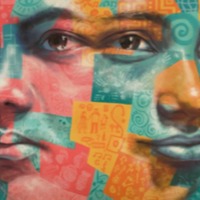
Avery
There are an estimated 403,000 people living in modern slavery in the United States (GSI 2018). Sex trafficking exists throughout the country. Traffickers use violence, threats, lies, debt bondage and other forms of coercion to compel adults and children to engage in commercial sex acts against their will. The situations that sex trafficking victims face vary, many victims become romantically involved with someone who then forces them into prostitution. Others are lured with false promises of a job, and some are forced to sell sex by members of their own families. Victims of sex trafficking include both foreign nationals and US citizens, with women making up the majority of those trafficked for the purposes of commercial sexual exploitation. In 2015, the most reported venues/industries for sex trafficking included commercial-front brothels, hotel/motel-based trafficking, online advertisements with unknown locations, residential brothels, and street-based sex trafficking. Avery* was 12 years old when she was trafficked into commercial sexual exploitation by a woman who promised her a job in modelling. She was kidnapped, beaten, raped, deprived of food and water, and when she returned home remained under the control of her trafficker until she was 18 years old.
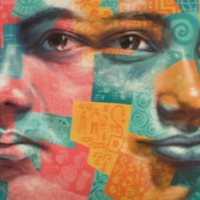
A.
There are an estimated 20,000 people living in conditions of modern slavery in Albania (GSI 2018). An estimated 10% of girls in Albania are married before their eighteenth birthday, with child marriage most common among the Roma ethnic group and in poor, isolated and rural areas. Child marriage is driven by gender inequality and while country has committed to eliminate child, early and forced marriage by 2030 in line with target 5.3 of the UN Sustainable development goals, no progress has been reported thus far. Human traffickers also exploit domestic and foreign victims in Albania, and traffickers exploit victims from Albania abroad. Traffickers exploit Albanian women and children in sex trafficking and forced labor within the country, especially during tourist season. Traffickers use false promises such as marriage or employment offers to force victims into sex trafficking. Traffickers exploit Albanian victims in sex trafficking in countries across Europe, particularly Kosovo, Greece, Italy, Belgium, Germany, Switzerland, North Macedonia, Norway, the Netherlands, and the UK. Albanian migrants who seek employment in Western Europe face forced labor and forced criminality, particularly in the UK. When she was a young girl A’s mother left her father for another man. Too poor to look after her, A’s mother sent her to live with a neighbours’ family who, while treating her well at first, began to withhold food and exploit her. She stayed there for one year before returning to live with her mother who, after spending some time begging, had been forced in to prostitution by a man who had promised to help her get a better house. A’s mother’s boyfriend began sexually abusing her, and when a friend found out, he hit the boyfriend with his car. A began working as a prostitute at the age of 13, thinking she was helping her mother who was too ill to work. One day A met a man who took her to a convent in Italy who referred her to a shelter where she was helped build a better life.
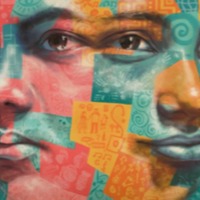
Soneeya
There are an estimated 171,000 people living in modern slavery in Nepal. Internal trafficking is significant in Nepal. Girls are trafficked internally for forced labour, sexual exploitation and forced marriage. A significant number of girls are estimated to be trafficked for sexual exploitation in Kathmandu’s entertainment sector and across the open border with India to Mumbai and other urban centres. Recent research in Kathmandu found that between 40 and 60 per cent of the females interviewed in entertainment sector workplaces (massage parlours, dance bars and cabin restaurants) were under the age of 19. Poverty is a significant driving factor for the exploitation and forced marriage of young girls in the country as although levels are declining, an estimated 10 million people live on incomes between USD1.90 and USD3.20 a day. When Soneeya was 15 years old, she was forced to marry a man 13 years older. She was subjected to physical and sexual abuse daily.
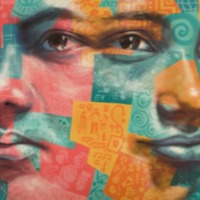
Jasmine Grace
There are an estimated 403,000 people living in modern slavery in the United States (GSI 2018). Sex trafficking exists throughout the country. Traffickers use violence, threats, lies, debt bondage and other forms of coercion to compel adults and children to engage in commercial sex acts against their will. The situations that sex trafficking victims face vary, many victims become romantically involved with someone who then forces them into prostitution. Others are lured with false promises of a job, and some are forced to sell sex by members of their own families. Victims of sex trafficking include both foreign nationals and US citizens, with women making up the majority of those trafficked for the purposes of commercial sexual exploitation. In 2015, the most reported venues/industries for sex trafficking included commercial-front brothels, hotel/motel-based trafficking, online advertisements with unknown locations, residential brothels, and street-based sex trafficking. Jasmine Grace was 18 years old when she first met Brian. They began to see each other often and Brian bought Jasmine Grace nice things. One night, Brian took Jasmine Grace to see her friend who had become engaged in prostitution after also meeting a man. Her friend told her about the amazing life she had, how much money she was making and how her ‘boyfriend’ took care of her. After being taught how to service johns, Jasmine Grace recalls how Brian kept her under his control through beatings, violence and threats for 5 years. Though Jasmine Grace managed to escape her trafficker, she notes how her life spiralled as she became homeless and addicted to heroin, taking another 3 years before she was able to get clean.
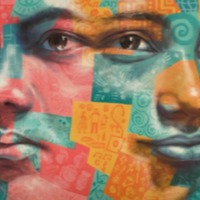
Grizelda Grootbroom
There are an estimated 155,000 people living in modern slavery in South Africa (GSI 2018). South Africa remains a source, transit and destination country for men, women and children subjected to forced labour and sex trafficking. South African children were recruited from poor, rural areas to urban centres, such as Johannesburg, Cape Town, Durban, and Bloemfontein, where girls were subjected to sex trafficking and domestic servitude and boys are forced to work in street vending, food service, begging, criminal activities, and agriculture. Local criminal rings organized child sex trafficking, Russian and Bulgarian crime syndicates facilitated trafficking within the Cape Town commercial sex industry, and Thai and Chinese nationals often organized the sex trafficking of Asian men and women. Nigerian syndicates dominated the commercial sex industry in several provinces. To a lesser extent, syndicates recruited South African women to Europe and Asia, where some are forced into prostitution, domestic servitude, or drug smuggling. Grizelda was 18 when she moved from Cape Town to Johannesburg on the promise of a friend she would have somewhere to stay. However, upon arrival, Grizelda’s friend took her to a house and after she left, Grizelda never saw her again. After a few hours, men began to arrive. Grizelda was subjected to physical abuse and forced in to prostitution.
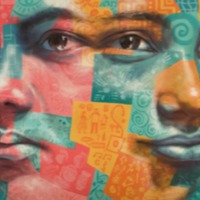
Natalie
There are an estimated 136,000 people living on conditions of modern slavery un the United Kingdom (Global Slavery Index 2018). According to the 2017 annual figures provided by the National Crime Agency, 5, 145 potential victims of modern slavery were referred through the National Referral Mechanism in 2017, of whom 2,454 were female, 2688 were male and 3 were transgender, with 41% of all referrals being children at the time of exploitation. People are subjected to slavery in the UK in the form of domestic servitude, labour exploitation, organ harvesting and sexual exploitation, with the largest number of potential victims originating from Albania, China, Vietnam and Nigeria. This data however does not consider the unknown numbers of victims that are not reported. Natalie was trafficked to England and forced in to prostitution. Though she was able to escape after a while, she was left homeless and penniless, forcing her to return to the sex industry. Natalie tried to apply for a national insurance number and go on benefits, but her claim was rejected. Natalie was also pregnant. Homeless and pregnant, Natalie made the difficult decision to get an abortion and moved in with one of her clients, who restricted her movement and confined her to the house. Eventually in 2013, Natalie was able to escape her enslavement.
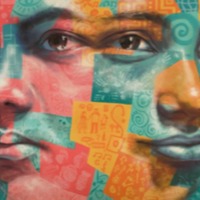
AR
There are an estimated 31,000 people living in condition of modern slavery in Israel (GSI 2018). Women from Eastern Europe, China and Ghana, as well as Eritrean men and women are subjected to sex trafficking in Israel. People are often lured through the promise of seemingly legitimate jobs, only to be subjected to commercial sexual exploitation upon arrival. Here AR tells of her experience of medical care while being held in a brothel in Israel.
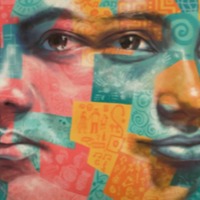
Shailaja
It is estimated that almost 8 million people are living in conditions of modern slavery in India (GSI 2018). The skewed sex ratio in some regions of India has fuelled the trafficking and selling of women and young girls as brides within India. Women are reportedly sold off into marriage by their families, sometimes at a young age, and end up enduring severe abuse, rape and exploitation by their husbands. It is also reported that women and girls from impoverished backgrounds have been lured by promises of marriage by younger men from urban areas, then forced into sex work once married. Shailaja was forced to marry her cousin despite her classmates alerting the authorities. Subjected to verbal and physical abuse and suffering from malnutrition, Shailaja has had three pregnancies in her short marriage, with her first ending in miscarriage, when Shailaja did give birth to a girl, her husband and his family were unhappy and abused her further, forcing her to abort her third pregnancy after discovering it too would be a girl.
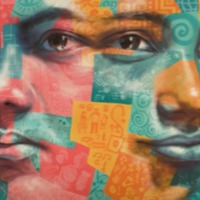
Setara
The Global Slavery Index 2018 estimates that on any given day there were nearly 8 million people living in modern slavery in India. The GSI 2018 reports an emerging trend in northeast India where organised trafficking syndicates operate along the open and unmanned international borders, duping or coercing young girls seeking employment outside their local area in to forced sexual exploitation. Many women and girls are lured with the promise of a good job but then forced in to sex work, with a 'conditioning' period involving violence, threats, debt bondage and rape. Setara was sold to a brothel in Sonagachi at 15 years old. Setara was able to leave sexual exploitation when she met her husband, however he would not let her forget where she came from and eventually Setara returned to the brothel.
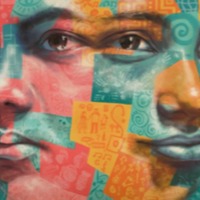
Maria C.
In 1997, at the age of 18, Maria was trafficked from Mexico into sex slavery in the US. She was transported into Texas, then to a trailer in Florida. Up to four young women worked in the same trailer, each of them having sex with up to 35 men a day, for 12 hours a day. They were constantly guarded, and beaten and raped by their bosses. After Maria had been enslaved for several months, FBI agents, along with agents from the Immigration and Naturalization Service and local law offices, raided the brothel. Some of her captors were tried, others escaped and returned to Mexico. Maria now observes that she is “in fear for my life more than ever.”
The US Department of Justice estimates that of the 14,500 and 17,500 foreign-born individuals trafficked into the US annually, some 80 percent are female, and 70 percent of these women end up as sex slaves. Feeder countries include Albania, the Philippines, Thailand, Mexico (many from the central region of Tlaxcala, a haven for modern-day slave traders), Nigeria, and Ukraine. Often the women are forced to work to pay off the debts imposed by their smugglers—debts ranging from $40,000 to $60,000 per person. They might perform 4000 acts of sexual intercourse each year to meet their quota, at $10 to $25 per act.
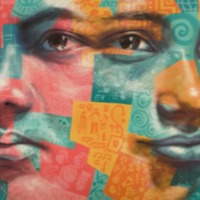
Jill
Born and raised in the US, Jill was trafficked into sex slavery from her home state of Ohio in 1981 at the age of 14. She made one attempt to escape, which led to punishment so severe that she never tried again. Contacting her family was out of the question, in part because she had left behind a dangerous home environment to become one of between 1.3 and 2.8 million runaway and homeless youth in America. These individuals are particularly vulnerable to sexual exploitation by traffickers: the Department of Justice estimates that 293,000 youth are at risk. The National Center for Missing and Exploited Children (NCMEC) estimates that “1 in 5 of the 11,800 runways reported to the National Center for Missing & Exploited Children in 2015 were likely sex trafficking victims.” Jill notes that after her liberation from slavery, she “still didn’t exist as anything more than a slave, except I was an escaped slave.” Jill still felt “less than human” after her three-year captivity ended, and struggled to recognize herself as a human individual. But narrating her story, she explains, is “an integral part of my recovery.”
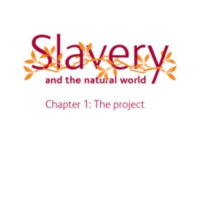
Slavery and the Natural World
In consultation with local community groups, in 2007 the Natural History Museum commissioned new research into its collections that link slavery and the natural world. The research uncovered experiences of enslaved people and the use of plants in their everyday life, as food, medicines and poisons. It also examined the complex relationships between enslaved people and naturalists exploring newly-colonised lands. The museum ran a series of public events, co-hosted by Race on the Agenda, which aimed to bring the historical, scientific and public viewpoints together. It created online educational resources on themes such as Commercial Plants, Everyday Life, Diet and Nutrition, and Resistance. The museum also developed cross-curricular ideas for school lessons in Science using the context of slavery, looking at foods across different cultures, for example.